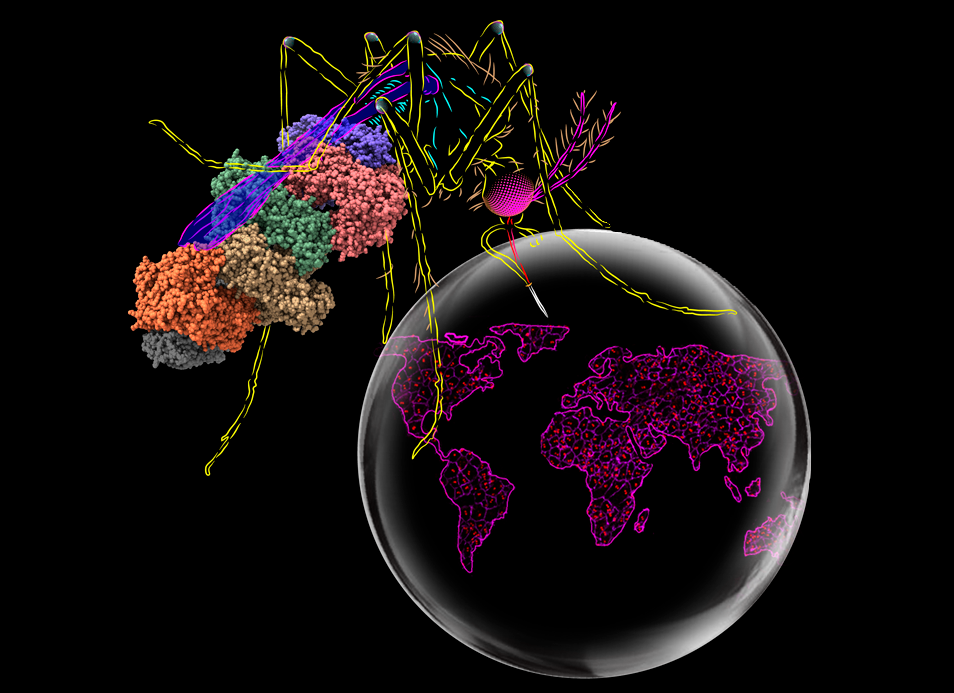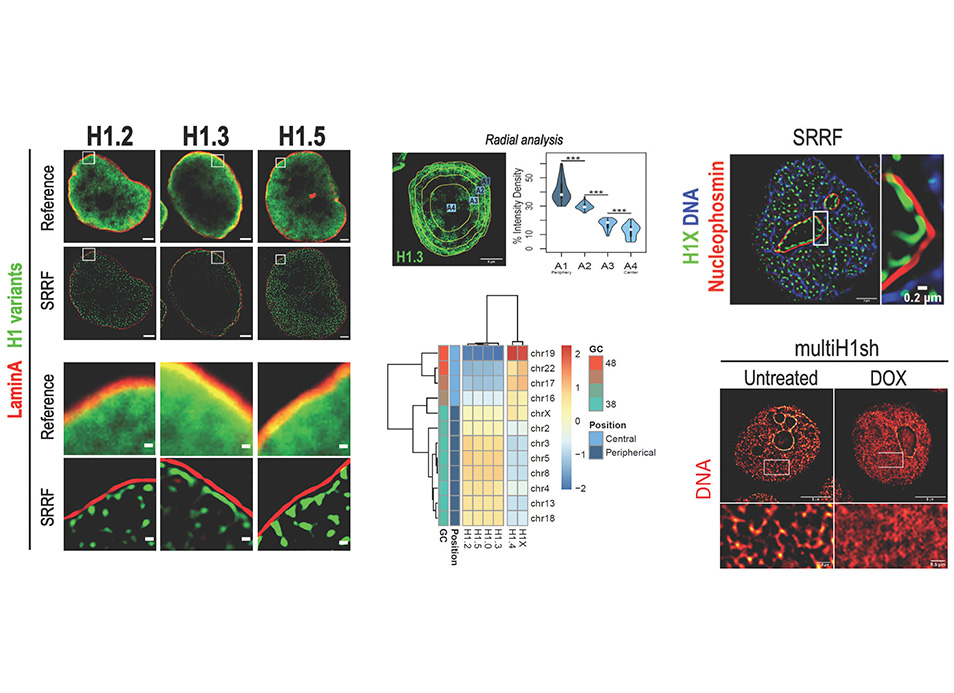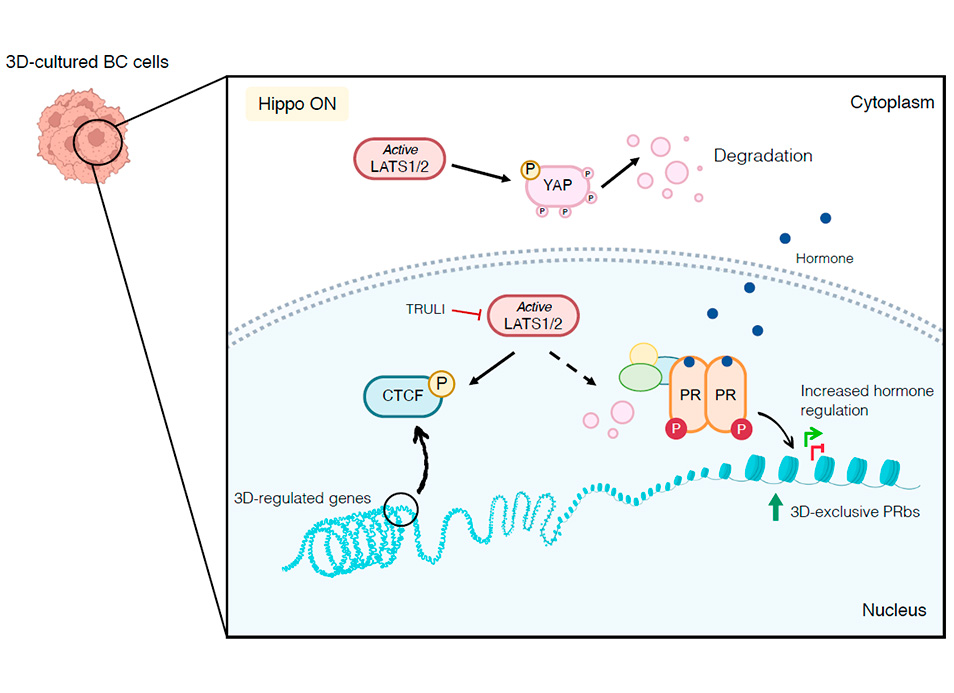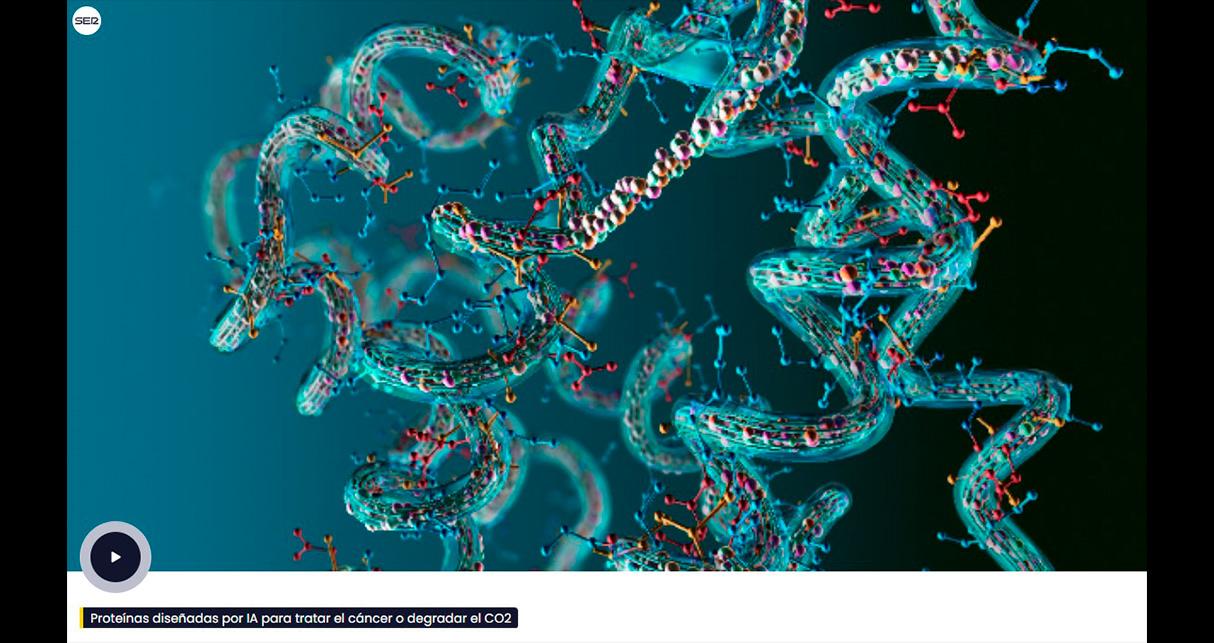New publication in eLife of the Jordan Lab in collaboration with the IBMB Imaging Platform showing that…
Multimerization of Zika Virus-NS5 causes ciliopathy and forces premature neurogenesis
Researchers from the Institute of Molecular Biology of Barcelona, (IBMB) – Spanish research council (CSIC) have identified the molecular mechanisms through which the Zika virus causes neurodevelopmental disorders of the nervous system of the foetus, such as congenital microcephaly syndrome.
The results of the study, published in Cell Stem Cell, reveal that the viral NS5 polymerase protein– the protein responsible for the replication of the viral genome–causes a severe damage of key organelles in neural stem cells. These findings pave the way for a promising starting point towards the design of potential therapeutic agents against this pathogen.
The study is the result of a great synergy between two research groups at the IBMB-CSIC combining their knowledge in Developmental and Structural Biology. Murielle Saade, a Ramón y Cajal research investigator, and Elisa Martí, CSIC research professor, both from the Department of Developmental Biology of the IBMB, have led the functional studies.
Diego S. Ferrero, postdoctoral researcher, and Nuria Verdaguer, CSIC research professor from the Structural Biology department of the IBMB, have led the structural studies of the viral protein. The work has been performed in collaboration with the Vall d’Hebron Hospital of Barcelona (VHIR) and the Children’s Hospital of the University of Pennsylvania (USA).
The virus interferes and prevents the reception of growth factors crucial for neural stem cells proliferation
Following Zika infection, the NS5 protein exits the nucleus and localizes in the base of the primary cilia, a membrane-bound organelle that resembles to an antenna localized in the surface of each embryonic neural stem cell.
“The primary cilium turns to be the central processing of key growth factors involved in the proliferation and generation of new neural stem cells, essential for ensuring normal brain development,” explains Murielle Saade.
“For this project, we used as an in vivo model, the chick central nervous system that has a long and distinguished history as a major system in developmental biology” explains Elisa Martí,” we have discovered that NS5 binds and “destroys” key proteins necessary for the formation of the primary cilium in embryonic neural stem cells, which leads to ciliopathy and precautious neurogenesis and, in turn, interrupts fetal brain growth”.
For the structural studies, explains Diego S. Ferrero, “we have analysed the atomic structure of NS5, and we have observed that the protein is capable of assembling multiple copies of it”. “We have identified the key region of the protein involved in its self-assembly,” adds Nuria Verdaguer, “a region that has been shown essential for the exit of the NS5 form the nucleus and its location at the base of the primary cilium”.

The body of the mosquito corresponds to the crystal structure of the full-length ZikV-NS5 protein oligomer. The world map globe shows the apical surface landscape of NPCs. Each NPCs is outlined by the apical complex shown in purple where the centrosome is highlighted in red. The worldwide key message from this illustration is that the developing brain of every human embryo is composed of NPCs, that hold a centrosome at their apical surface, which might be a target of NS5 following ZikV transmission by the mosquito Aedes. The article described the cellular events associated with ZikV-NS5, underlying an atypical non-genetic ciliopathy and premature neuron delamination of NPCs. Cover Artwork by Murielle Saade and Diego S. Ferrero.
Zika virus disease is transmitted mainly by mosquitoes of the genus Aedes. The infection, which in most people can be mild or asymptomatic, especially affects pregnant women. Through the placenta, they can transmit the virus to their fetuses. In this case, the infection can cause microcephaly and other congenital malformations. Four years ago, the Zika virus captured the attention of the world press. In response to accelerating urbanization, connectivity and climate change, it has been predicted that half of the world´s population will be exposed to disease spreading-Aedes in 20 or 30 years, which makes it a huge threat. The authors of this work highlight the need for basic and multidisciplinary research to avoid situations similar to the one we are currently facing with the pandemic caused by SARS-CoV-2. The researchers also emphasize that “the achievements of the basic research are based on continuous work overtime, which should never be interrupted if we want to defeat new pathogens”.
This work was supported by grants of the Spanish Ministry of Science and Innovation (BFU2016-77498-P, BFU2016-77498-P, BIO2017-83906-P, BIO2017-83906-P), the NIH/ NINDS (R00NS089859), IDDRC-NPDA (CHOP/Penn) and “La Marató de TV3” foundation (201833-10).
Murielle Saade, Diego S Ferrero, José Blanco-Ameijeiras, Elena Gonzalez- Gobartt, Victor M Ruiz-Arroyo, Elena Martínez-Sáez, Santiago Ramón y Cajal, Nuria Verdaguer and Elisa Martí. Multimerization of Zika Virus-NS5 causes ciliopathy and forces premature neurogenesis. Cell Stem Cell (2020), https://doi.org/10.1016/j.stem.2020.10.002.



